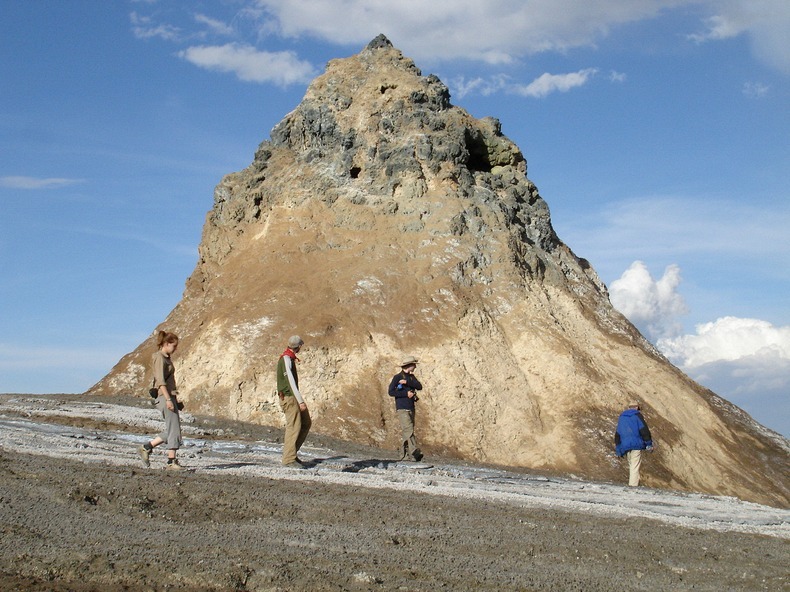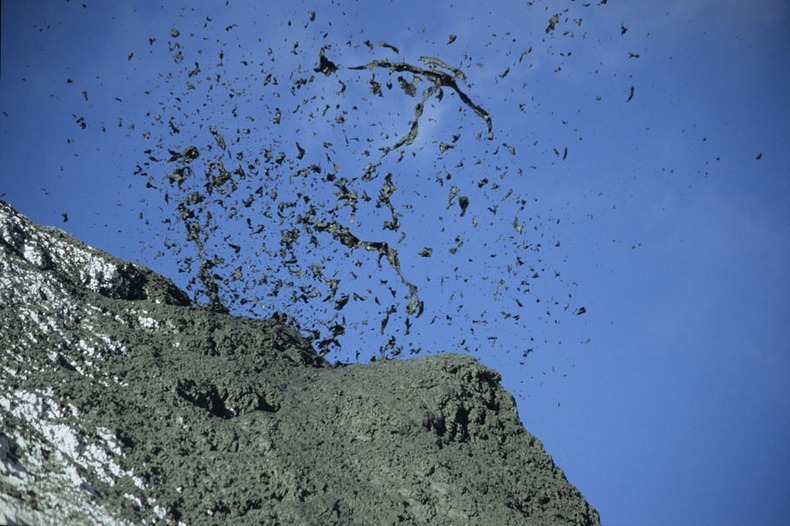Ol Doinyo Lengai is an active volcano located in Arusha Region, Tanzania, rising majestically from the East African Rift Valley depression to a summit of 2890 meters. To the indigenous Maasai people, it is the "The Mountain of God”.
The lava produced at Ol Doinyo Lengai is unlike any other lava on earth. Most volcanoes produce basaltic lava, but Ol Doinyo Lengai is the only one in the world that produces natrocarbonatite lava - a type of lava rich in the rare sodium and potassium carbonate minerals - nyerereite and gregoryite. These minerals are quite uncommon in the geologic record, and even less common at the surface as a liquid. Due to this unusual composition, the lava is erupted at relatively low temperatures - approximately 500-600 °C, which is half the temperature of typical glowing basaltic lava you see in pictures of volcanoes. This temperature is so low that the molten lava appears black in sunlight, rather than having the red glow common to most lavas. The sodium and potassium carbonate minerals contained in the lava of Ol Doinyo Lengai are anhydrous and react very rapidly when they come into contact with moisture in the atmosphere. The black or dark brown lava and ash begins to turn white within a few hours of eruption as the minerals absorb water. After about six months, with the help of the elements, the lava decomposes to yellow-brown sand. The resulting volcanic landscape is quite different from any other in the world.
The lack of bulky silica molecules in the lava at Ol Doinyo Lengai allows the melt to flow extremely easily, making it the least viscous lava on earth. The low temperatures of natrocarbonatites means they can be studied closely without protective gear. This is one of the most intriguing aspects of Ol Doinyo Lengai to geologists. This doesn’t mean you can get up, close and personal with the lava as its substantially hot to burn through your clothes and skin. Besides, being unusually fluid it can encroach the explorer in a matter of seconds.
Compared to other destructive volcanoes, Oldoinyo Lengai is considerably benign and sometimes described as a "toy volcano" because the small cones inside the crater often seem to produce harmless miniature eruptions and cute little spatters of lava. The activity is usually centred in one or more of the small hornitos, or cones, that have been formed on the crater floor by previous eruptions of lava.
Eruptions typically occur in open lava ponds that may or may not be overflowing. Lava flows issues from holes or cracks inside or near the base of the cones, or lava splashes or fountains from the summit vents of the hornitos. This activity is thought to be a function of the plumbing of the crater, the level of the lava within the plumbing, and the gas content of the magma.
This strange lava was identified for the first time only in the 1960s because Oldoinyo Lengai is so steep and the hike so arduous, that scientific expeditions have been extremely rare. It was only in 1966, two geologists - J. B. Dawson and G. C. Clark - made the first successful attempt to reach the active crater.
The lava at Ol Doinyo Lengai is cool enough that it only glows at night. Photo credit

These tiny peaks are called hornitos Photo credit

Sources: Wikipedia, Earlham College, Volcano.20m.com



























Comments
Post a Comment